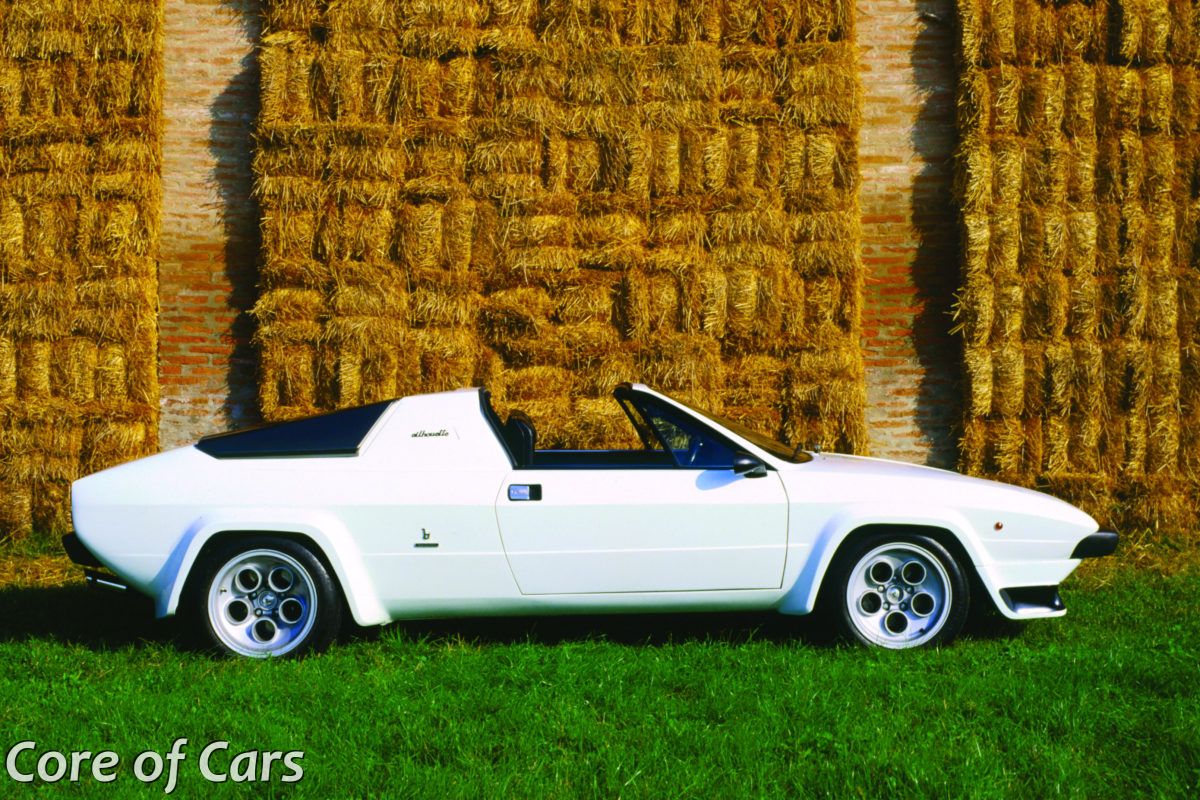In the eyes of most car manufacturers, the idea of adding a V8 engined model to their line-up would mean stepping things up – power, performance, handling and interior finish – to signify that this would be a range topping candidate. In Lamborghini’s worldview, though, a V8 suits the modesty and simplicity of an entry-level model. The launch of the Urraco P250 at the 1970 Turin Motor Show was thus a novelty for Lamborghini, and entailed a big challenge for the relatively small car factory, as they ventured into one of the toughest segments, taking on the Porsche 911 and Ferrari Dino.
Urraco P250
The V8 in the Urraco was designed from scratch almost single-handedly by master engineer Paolo Stanzani, who was responsible for the daily managing of Automobili Lamborghini from 1968 to a few years in to the 1970’s. The result was a compact (2463 ccm) aluminium alloy engine where the two rows of cylinders were perpendicular to each other, an easy-revving power plant that thrived at higher revs, power output peaking at 220 bhp at 7500 rpm.
Financial difficulties for Lamborghini meant further development of the Urraco and the V8 went painfully slow, and production of the Urraco didn’t get under way before 1972. This unfortunate startup meant the initial interest generated at the motor show in 1970 was ebbing, and it was soon clear that the Urraco wouldn’t sell as well as planned. Development of a larger engine went on alongside the production of the 2.5-litre unit, and at the 1974 Turin Motor Show, Lamborghini launched the Urraco P300, equipped with a 250 bhp 3-litre V8, its increased power and torque making for a smoother ride. A major improvement over the P250’s engine was the fact that the 3-litre engine used chains instead of cam belts, increasing reliability hugely.
The Urraco P300 was not alone on the stand in Turin, though. The Italian government had passed laws that imposed increased taxes on cars whose engine size exceeded 2 litres, and Lamborghini responded by offering the Urraco P200 to the home market. The 1994 ccm engine is one of the smallest V8 engines ever put into production, and the reduction in power to a mere 182 bhp meant it was no commercial success, with only 66 P200s being sold, despite having the more luxurious P300 interior installed.
Silhouette
After 791 iterations, the last Urraco left Lamborghini in 1979. However, the V8 was not dead. In 1976, while the Urraco was still in production, Lamborghini brought the Silhouette to the Geneva Motor Show. This car was basically mechanically identical to the Urraco P300, receiving only some suspension setting changes. The design, however, signalled a more racing-focused philosophy at Lamborghini. Flared wheel arches, low front wing, more prominent rims and wider wheels were amongst its features. The targa roof was a novelty for Lamborghini, and the Silhouette looked a lot more purposeful than the Urraco. Nevertheless, economy would again inflict wounds on the production numbers and general management of the Lamborghini factory, to the point where the factory was declared bankrupt in 1978. Sadly, only 55 Silhouettes left the factory.
Jalpa
After three years on the brink of extinction, the year 1981 would see the revival of Lamborghini. Visitors at the Geneva Motor Show saw the new Jalpa, powered by a 3.5-litre V8. Another development of the Urraco platform, the Jalpa sported flared arches, front wing and targa roof, much like the Silhouette. However, the Jalpa’s rims gave it a more sedate and understated look. Production of the Jalpa continued until 1988, and when the last Jalpa rolled off the line, a total of approx. 1255 V8 engined Lamborghinis had been made over 18 years. Thus, the Lamborghini V8 reached adulthood, only to leave and never return. It had seen several combinations of bore and stroke, ranging in size from a very modest 2 to a chunky 3.5 litres.
Will we ever see a Lamborghini V8 again? It is not at all unlikely, with recent environmental demands causing manufacturers to look at smaller engines aided by artificial aspiration. The forthcoming SUV could possibly house such an engine, but Lamborghini’s proud succession of naturally aspirated engines won’t fall easily. However, the last surprise to come from the Sant’Agata factory is yet to be experienced.
This article was first published on lovecars.com.

